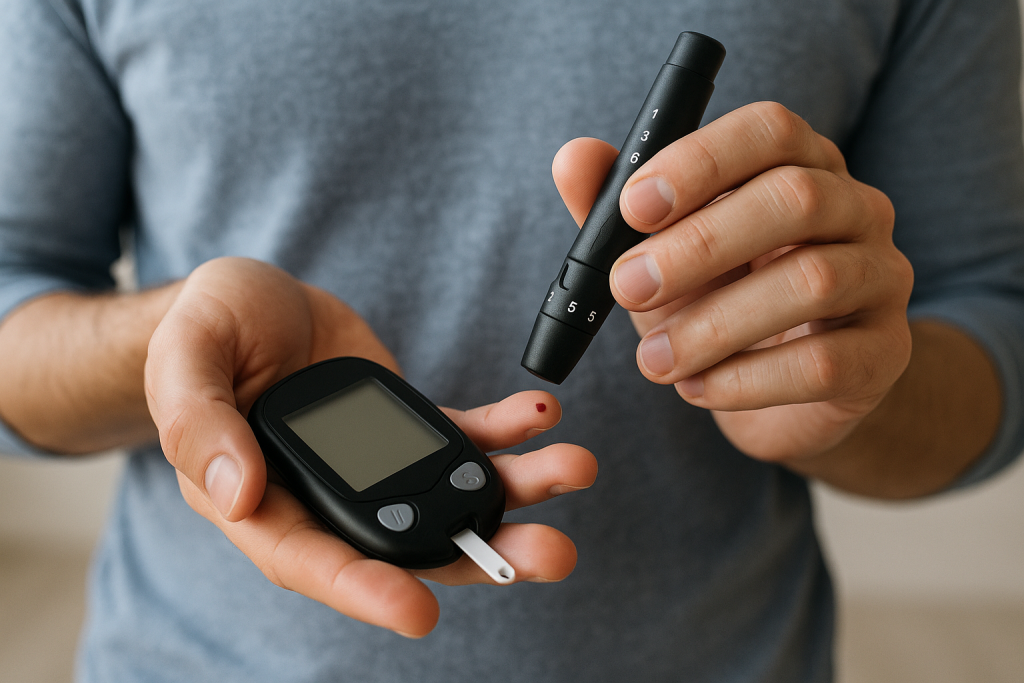For generations, the specter of diabetes has loomed, often making its presence known only when its roots have already begun to deepen. The diagnosis, frequently arriving after years of silent progression, can feel like a late warning, a moment to manage rather than prevent. But what if the future held a different narrative? What if we could peer into the body’s subtle signals, years before the first glucose spike raises an alarm, and gain the power to alter our course?
Within the intricate electrical symphony of your beating heart lies a profound and largely untapped source of information. Now, visionary scientists within the NHS are pioneering the use of a groundbreaking Artificial Intelligence tool that promises to decipher this hidden language. This isn’t science fiction; it’s a tangible reality currently undergoing rigorous trials, capable of predicting an individual’s risk of developing diabetes a staggering 5 to 13 years in advance – all from the seemingly routine data gleaned from your heart’s electrical activity.
Forget the anxious wait for noticeable symptoms, the prick of blood tests as the first hints emerge. This innovation offers a paradigm shift: a potential early warning system embedded in the very rhythm of life.

Unlocking the Subtleties: How Your Heart’s Electricity Holds the Key
The connection between the heart’s electrical activity, measured through a simple and widely accessible electrocardiogram (ECG), and a metabolic disorder like diabetes might seem initially perplexing. However, the insidious nature of diabetes involves a gradual impact on the entire body, including the cardiovascular system. Years before blood sugar levels reach diagnostic thresholds, subtle changes in the heart’s structure and function can begin to occur.
The brilliance of this AI lies in its ability to detect these microscopic deviations in the ECG waveforms – deviations far too nuanced for the human eye or traditional analytical methods to consistently identify. By being trained on vast datasets of ECG recordings linked to future diabetes diagnoses, the AI learns to recognize the subtle “signatures” of heightened risk, effectively acting as an oracle interpreting the heart’s silent warnings.
Here’s a glimpse into how this intricate process works:
- Data Acquisition: A standard, non-invasive ECG test is conducted, recording the electrical activity of the heart over a short period.
- AI Analysis: The ECG data is then fed into the специально trained AI algorithm.
- Pattern Recognition: The AI meticulously analyzes the waveforms, identifying subtle patterns and anomalies that are statistically correlated with an increased future risk of diabetes.
- Risk Assessment: Based on the identified patterns, the AI generates a risk assessment, indicating the likelihood of the individual developing diabetes within a specific timeframe (up to 13 years in the current trial).
The NHS Trial: A Beacon of Proactive Healthcare
The ongoing trials within the NHS represent a crucial step towards validating and implementing this transformative technology. By integrating this AI tool into routine cardiac assessments, healthcare providers could gain an unprecedented opportunity to identify at-risk individuals much earlier in their journey.
The potential benefits of this early risk identification are immense:
- Extended Window for Intervention: Identifying high-risk individuals years in advance provides a significantly longer period to implement preventative strategies.
- Personalized Lifestyle Modifications: Individuals can be guided towards tailored lifestyle changes, including dietary adjustments, increased physical activity, and weight management programs, which have proven effective in delaying or preventing the onset of type 2 diabetes.
- Targeted Preventative Therapies: In some cases, earlier initiation of certain medications or therapies might be considered under close medical supervision.
- Empowered Individuals: Knowledge of increased risk empowers individuals to take proactive steps towards managing their health and working closely with healthcare professionals.
- Reduced Healthcare Burden: By potentially preventing or delaying the onset of diabetes and its associated complications, this early detection system could ultimately lead to a significant reduction in the burden on the healthcare system.
Beyond Prediction: Shaping a Healthier Future
This AI-powered prediction tool is not merely about forecasting illness; it’s about fundamentally reshaping our approach to healthcare. It heralds a move towards a more proactive and preventative model, where early detection empowers individuals and clinicians to collaborate in averting potential health crises.
The potential impact extends beyond diabetes:
- A Blueprint for Other Diseases: The success of this AI in deciphering the heart’s signals for diabetes risk could pave the way for similar tools targeting other chronic conditions with cardiovascular implications.
- Integrating with Wearable Technology: Imagine a future where wearable devices continuously monitor your heart’s electrical activity, feeding data to AI algorithms that provide ongoing risk assessments and personalized recommendations.
- Democratizing Early Detection: The non-invasive nature and potential for widespread implementation through standard ECG machines could make early risk assessment more accessible to a larger population.
The NHS trial of this AI-driven diabetes prediction tool is more than just a scientific study; it’s a glimpse into a future where technology unlocks the body’s hidden narratives, providing us with the foresight to shape healthier lives. The silent language of your heartbeat may soon hold the key to rewriting your health story, years before the first symptoms even whisper their presence. The possibilities are not just promising; they are electrifying.

Leave a Reply